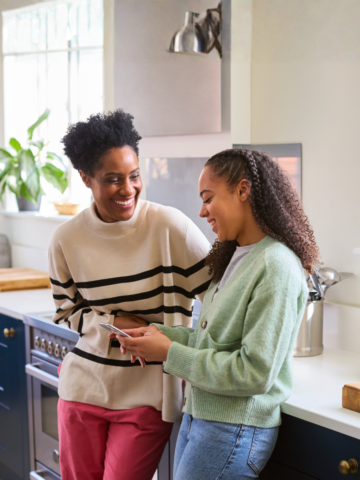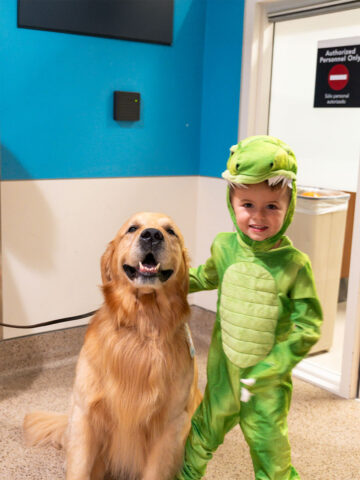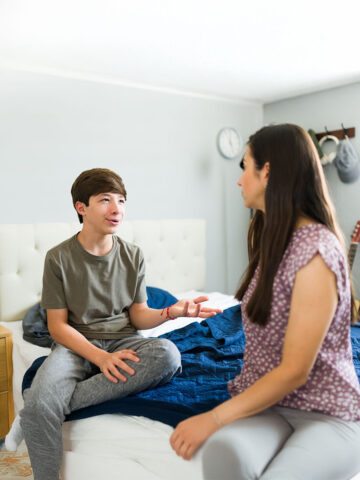By Dr. Diana Graham and Dr. Christopher Min, pediatric psychologists at CHOC
For many of us, the COVID-19 pandemic has created a “new normal” as efforts to curb the spread of the virus have changed what day-to-day life looks like. It can be difficult to balance maintaining our physical and mental health while also supporting one another.
Over the last several months, many parents and guardians have tried their best to think of creative ways to help children understand the dangers of COVID-19 while also trying to limit its interference with their children’s quality of life. Kids and teens alike are struggling with the challenge of increased isolation from friends, barriers to traditional academic instruction, and uncertainty about the current events of the world, all without their usual outlets of fun and stress relief. This may result in children becoming burnt out during the era of COVID-19.
As a parent you may notice signs of the following symptoms in your child who feels burnt out by the COVID-19 pandemic: increased irritability, changes in sleep and/or appetite, less motivation to engage in things that used to interest them, withdrawal from others at home and/or increases in levels of reassurance they need due to uncertainty of current events.
Here are some things you can do to help your child if they are struggling with their mental health during COVID-19.
Help them engage in a consistent routine
Having structure and routine most days can help reduce your child’s reliance on screens, their anxiety related to COVID-19 uncertainty and changes, and increase their feeling of purpose during a time that typical go-to activities may be restricted.
- Start with thinking about what a typical day looks like for your child. Do they have online schooling or a hybrid of in-person and online schooling? What types of chores do they need to get done? Do you want them to get some physical activity each day?
- Next, decide whether it would be most helpful to schedule by the hour or in chunks of time (e.g., 9 a.m.-noon) in their routine. Be careful to not overschedule (e.g., every 30 minutes), as this may be too difficult for both you and your child to follow long-term.
- Scheduling in sleep and meal routines can help your child remain on a schedule similar to the one they follow during a typical school year. Having consistent sleep, wake and meal schedules can also help your child regulate their mood and manage stressful situations.
- Make these schedules visual for your child to see and follow. Put the schedule in a place that your child will most likely see, such as on the bathroom mirror, making it more likely to become their norm.
Schedule flexibility into your routine
While it is important to have consistency, it is also very important to be flexible with routines because, as we all know, life can get in the way! Having this flexibility allows your child to have an element of control during a very uncertain time, which can often help with managing anxiety. Here are some small ways to build flexibility into your child’s schedule:
- First, choose a couple of activities in your child’s schedule that allows for several choices to pick from. They can choose what food they want for lunch, or pick what to play during game time. Here’s a roundup of activity ideas for kids during COVID-19.
- Make lists of a three to four different choices available throughout the day for the activities on your schedule. For example, your child may have lunch at the same time every day but can have a list of different food options to choose from.
Keep your child moving
We are staying at home now more than ever, making it difficult to stay active and get “brain breaks.” However, we know that being more active can have a positive impact on our mood, ability to manage stress, and ability to focus. Here are some tips to include physical activity into your child’s daily schedule:
- Schedule in time for a physical activity to ensure that your child’s brain is getting the break it needs, especially from screens. Research has shown that recess at school can help children to stay on task and increase sustained attention.
- Keep a varied list of COVID-19-friendly physical activities that your child can choose from to help decrease sedentary behavior. Examples may include jumping jacks, YouTube yoga, a household dance party, and even taking a walk around the block while listening to music. Remember to practice physical distancing if exercising outdoors.
- Although physical activity is beneficial throughout the entire day, studies show that exercise between 4 p.m. and 6 p.m. can help a child’s ability to fall asleep and stay asleep. If your child is having sleep difficulties, time your child’s exercise activities to help promote more restful sleep.
- It can be challenging to motivate your child to be active when they are feeling burnt out. If your child seems uninterested in engaging in a physical activity, try to schedule it at a time when another person in the household can participate so that it can feel more fun and socially engaging rather than punishing. Or, they can take an online yoga class with a friend. As this becomes a more regular part of your child’s routine, it will likely become easier. For school-aged children and teenagers, it can also be helpful to collaborate with them on the list of choices for physical activity to increase their engagement when it becomes time to be active.
Normalize not always being OK
Kids learn from those around them. Let your child know that it’s OK to feel uneasy about how things are right now.
- You can do this by modeling good coping skills when you make a mistake or don’t have the answer to something and recognizing the uncomfortable emotions that might come along with this experience.
- Sometimes labeling emotions is enough to help validate your child’s experiences. By showing and discussing all the different emotions you may be experiencing during a difficult situation, it will help normalize this type of emotional processing for your child too.
- Create opportunities with your child to discuss how challenging COVID-19 is for so many people, the different ways these challenges may show up in our daily lives, and to brainstorm ideas on how to cope. This can build a pattern of communication in which your child notices warning signs of burn out sooner and can let you know when they need help.
Learn how to cope together
Engaging in family activities together can be a good way to decrease the likelihood of experiencing feelings of social isolation and give you and your child shared goals. By learning these coping skills together, it models for your child that it is OK if we do not feel happy all the time and there are ways that we can help manage challenging feelings.
- Consider regular family game nights where each person gets a turn choosing the game. Other examples may include an at-home scavenger hunt or a puzzle that the family takes time to work on each day. This provides both consistency and flexibility, in addition to social interaction.
- One fun idea can be to set family challenges each week. You may have a week where each day involves practicing a different coping skill (e.g., deep breathing, guided imagery, stretching or journaling) or a week where each person shares something that they are grateful for. Whoever can complete the most challenges during the week gets a reward, such as choosing Saturday night dinner or the next movie for family movie night. If there is a tie, then you can always split up portions of the fun night that each person gets to choose, such as one person choosing the movie and another choosing the meal.
When is this all not enough?
Let’s face it, we don’t always have all the resources to implement every strategy whenever we need it. Or, you may encounter situations where you try every recommendation and still notice concerning changes in your child. Either way, it is OK to ask for help.
- Be aware that you are only one person and many of us are forced to function without our typical support networks such as extended family and childcare centers because of COVID-19 restrictions. Consider some other avenues of support that may be helpful for you and your child to decrease burn out and help manage coping during the pandemic.
- Reach out to your child’s teacher or school counselor for support. Are they able to check in with your child more often? Have they noticed any changes in your child’s school engagement beyond what they think is typical right now? They may be able to provide more frequent or regular support.
- If you become concerned about your child’s mental health, contact your primary care physician. You can also call your insurance company for a list of in-network mental health professionals or do a search online for local mental health providers.
Here are additional mental health resources for your child during COVID-19
- CHOC’s mental health toolkit has resources for parents, kids and teens, and schools.
- CDC Parent Resources are organized by type of activity and age group, including directions for an At-Home Scavenger Hunt.
Help Lines
- Substance Abuse and Mental Health Services (SAMHSA) Disaster Distress Helpline
- National Suicide Prevention Lifeline: 1-800-273-8255
- Crisis Text Line: Text HOME to 741-741
- Orange County Crisis Assessment Team:
- Phone : 866-830-6011
- Website: https://www.ochealthinfo.com/bhs/about/aoabh/catpert
Apps
- MindShift: a cognitive behavior therapy-based app from Anxiety Canada that helps kids to learn about and track anxiety, as well as coach them through coping skills
- Headspace: A mindfulness app for everyday life
- Smiling Mind: An app that guides helpful coping skills based on age
Get more expert health advice delivered to your inbox monthly by subscribing to the KidsHealth newsletter here.
Learn more about COVID Vaccines for Children and Teens
Get answers to your frequently asked questions – and some peace of mind – with this complete guide to COVID-19 vaccines from CHOC pediatric experts.





